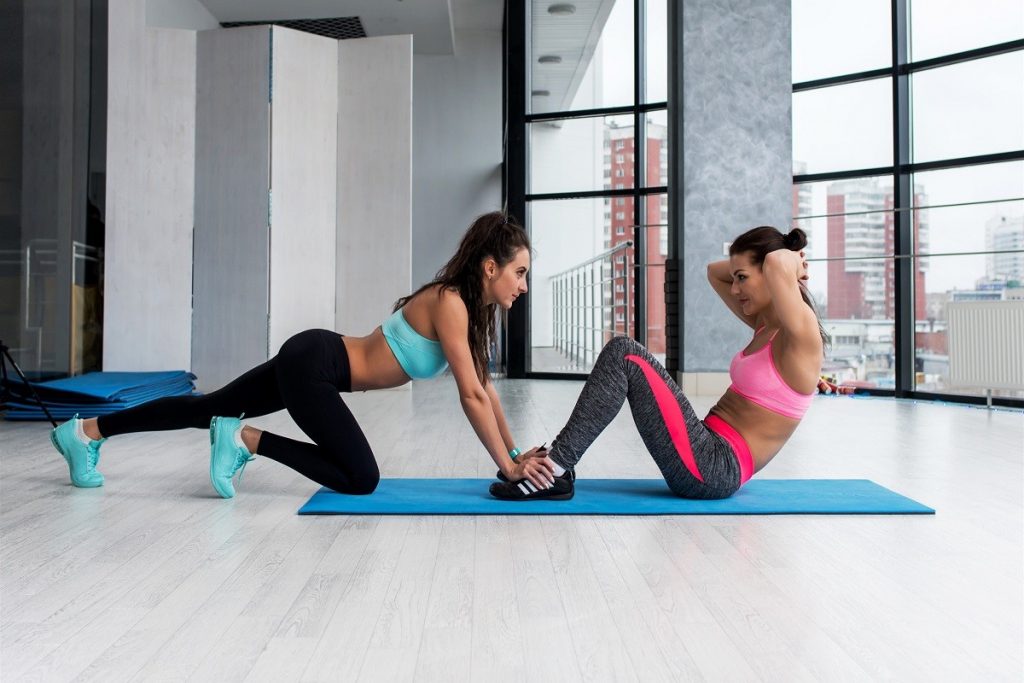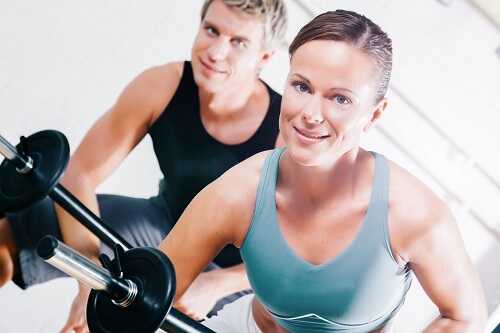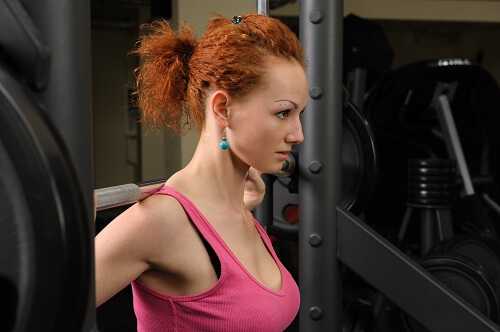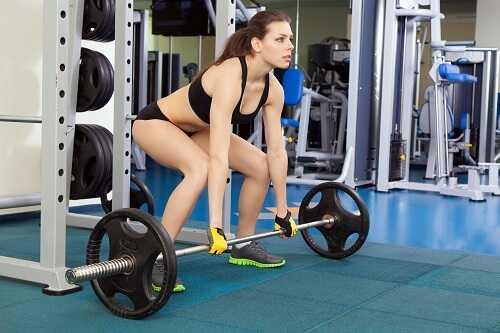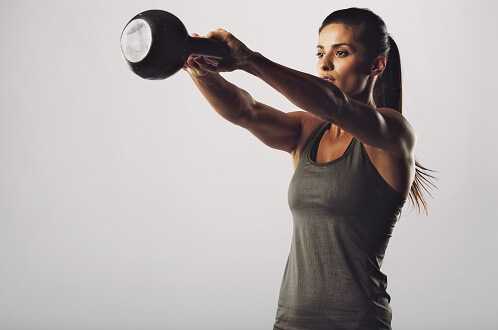Most gym veterans accept without question that a free weight workout produces superior results than a workout using machines. There are multiple exercises designed to isolate, build, and define nearly every skeletal muscle and muscle group in the body.
Isolation can help your body look great. But isolation is a problem. A great looking body is not necessarily a fit body. But the foundation of any fitness program must be exercises that build basic whole body strength and stamina.
Muscles do not work in isolation.
Every movement we make requires our muscles to move with or against each other. Every time we sit, stand, twist, bend, jump, step, reach or any of a thousand other movements, various muscle groups are working together to push, pull and stabilize. True fitness requires training movements, not muscles.
The following exercises concentrate on building a foundation of functional whole body strength. Each compound exercise activates multiple muscle groups, including the vital core muscles of the torso.
Deadlifts
The deadlift is a compound exercise involving lifting the weight from the floor to waist level, mimicking everyday bending and lifting. The deadlift targets multiple muscle groups including the latissimus dorsi, trapezius, erector spinae, gluteals, hamstrings, quadriceps, and hip flexors.
Performing the deadlift: Stand in front of the barbell with your feet shoulder width apart and your toes pointed slightly outward. Grip the barbell with an alternate grip (one palm out, one palm in) and squat with your hips back, your weight on your heels, and your arms straight.
Drive your hips forward and extend your knees to lift the weight from the floor, keeping your back straight and your head up. Keep the barbell close to your shins and thighs during the lift. The finish position should find you standing straight up with your shoulders back and the weight at thigh level.
Return to the starting position by flexing your hips and knees. Keep your back straight at all times.
Perform 3 sets of 5-8 repetitions using 75% of your maximum weight, resting 2-3 minutes between sets.
Squats
There is a reason you do not see many people at the gym performing squats: They are hard. Known as the “King of exercises”, squats develop muscle mass and power in the quadriceps. Like the deadlift, squats also activate other muscles of the back, legs, abdomen and butt.
Performing squats:
Position the barbell on a rack at about mid chest level. Grip the bar with a wide grip and place your head under the bar with your knees slightly bent. The bar should be across your shoulders and upper trapezius muscles. Do not rest the bar on your neck.
Place your feet shoulder width apart, toes pointed slightly outward, keeping your back straight and head up. Lift the bar by straightening your knees and step back from the rack.
Lower your hips and buttocks until your knees are bent 90 degrees and your thighs are parallel to the floor. After reaching the bottom position, push your hips forward and up in a slow fluid movement.
Repeat the movement for 10 repetitions. Never bounce out of the bottom position of the squat. A variation of the traditional squat is the front squat, where the barbell rests on the upper chest, held by your fingertips.
Do 3 sets of 10 repetitions at 60% of maximum weight.
Power Cleans
The power clean is a traditional Olympic lift that works the gluteals, hamstrings, calves and lower back, along with the upper back and trapezius.
Performing the Power Clean: This exercise requires two pulls. Start in a position similar to the deadlift, but grasp the bar at shoulder width with both palms facing inward. Squat with hips flexed, head up, and arms and back straight.
Pull the weight up past your knees towards your chest while simultaneously driving your hips forward and lifting your shoulders. Pull the weight up as high as possible before bending your knees and catching the bar on your upper chest. Rest the bar on your fingertips with your elbows held high and out.
Grasp the bar again and return it to the starting position. The main power for this exercise should come from the legs and hips, not the arms.
Do 3 sets of 5 repetitions at 70% maximum weight.
Incorporating these exercises into your free weight workout routine help you build a solid foundation of basic strength on which to base your overall fitness program.
Kettlebell Swings
A century ago, the kettlebell was among the primary training devices used by powerful Russian weightlifters. This “cannonball with a handle” remains a versatile tool for building functional strength. Because the weight is below the handle, the kettlebell is unstable and more difficult to control than a standard dumbbell.
The body, particularly the core, must work extra hard to perform kettlebell exercises, burning more fat and building more muscle in the process. Nearly any movement can be performed with a kettlebell, but kettlebell swing is a good basic movement to begin building overall body strength, working the quadriceps, gluteals, core, shoulders, back, chest, and arms.
Performing kettlebell swings: Stand upright holding the kettlebell with your arms straight and down in front of you. Keeping your back straight, push your hips back and bend your knees into a semi-squat while swinging the bell backwards between your legs. Pause for a moment before swinging the weight up to eye level.
Perform 2 sets of 12-15 repetitions.
If you are new to free weight training, start slowly and build up. These exercises can result in injury or overtraining, especially if you are unfit or try to do too much. Remember that training quality is more important than training quantity.

